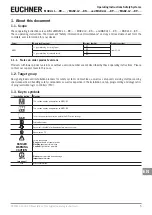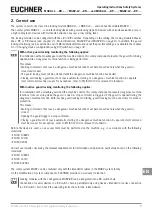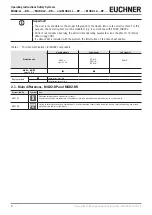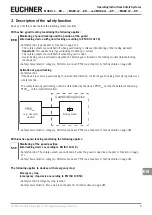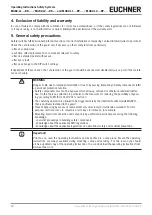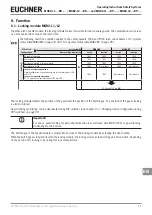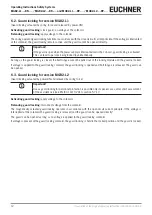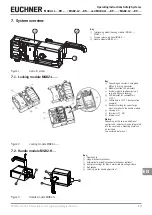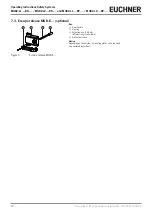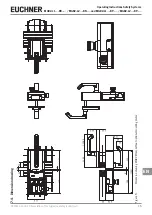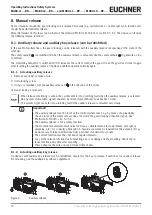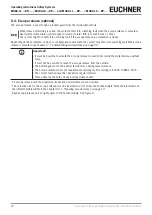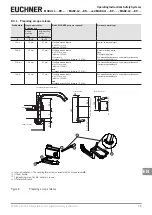
11
2500233-01-05/19 (Translation of the original operating instructions)
Operating Instructions Safety Systems
MGB2-L1…-BR.-… / MGB2-L2…-BR.-… and MGB2-L1…-BP.-… / MGB2-L2…-BP.-…
EN
6. Function
6.1. Locking module MGB2-L1/L2
Together with a handle module, the locking module makes it possible to lock movable guards. The combination also serves
as a mechanical door stop at the same time.
DIP
OFF
ON
The following switch-on condition applies to the safety outputs FO1A and FO1B (also see chapters 15.2. System
status table MGB2-BR on page 43 and 15.3. System status table MGB2-BP on page 45):
DIP switch
Configuration
System family
MGB2-BR
MGB2-BP
Guard locking monitoring
active
inactive
active
inactive
Condition
No fault in the device
&
TRUE
TRUE
TRUE
TRUE
Guard closed
TRUE
TRUE
TRUE
TRUE
Bolt tongue inserted in locking module
TRUE
TRUE
TRUE
TRUE
Guard locking active
TRUE
Not relevant
TRUE
Not relevant
In case of series connection:
Signal available from the upstream switch on the safety inputs FI1A
and FI1B
In case of separate operation:
DC 24 V present at the safety inputs FI1A and FI1B
TRUE
TRUE
Not relevant
Not relevant
FO1A and FO1B are
ON
The locking module detects the position of the guard and the position of the bolt tongue. The position of the guard locking
is also monitored.
Guard locking monitoring can be deactivated using DIP switches (see chapter 13.7. Changing device configuration (using
Important!
For use as guard locking for personnel protection in accordance with EN ISO 14119, guard locking
monitoring must be active.
The bolt tongue in the handle module is moved into and out of the locking module by actuating the door handle.
When the bolt tongue is fully inserted into the locking module, the locking arm locks the bolt tongue in this position. Depending
on the version, this locking is by spring force or solenoid force.





